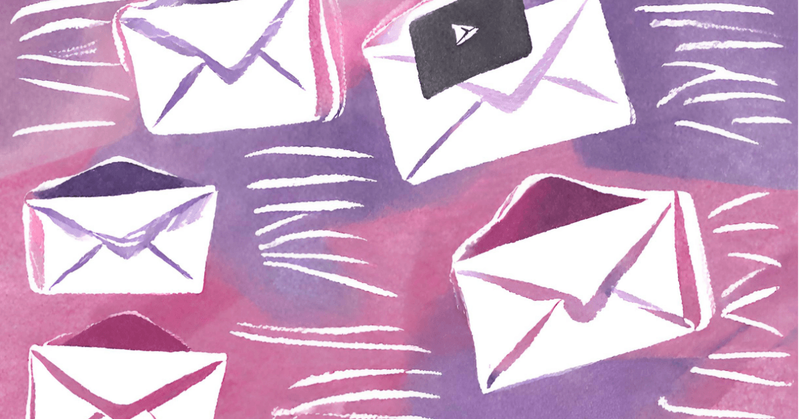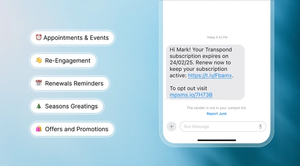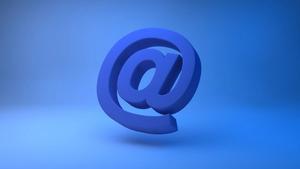Are you reaching the right customers with your email marketing?
64% of small businesses are already tapping into the power of permission-based email marketing, and they're seeing significant benefits.
Not only are consumers receptive to this strategy, but 71% of them actively choose offers that are relevant to their interests. Plus, with an ROI of $36 for every $1 spent, the efficiency of this strategy is hard to ignore.
This article breaks down what permission-based email marketing involves, outlines its key advantages, and actionable best practices for your business.
Definition of permission-based email marketing
Permission-based email marketing (otherwise known as opt-in email marketing) is simple - people have to say “yes” to recieve your emails.. Email content is only sent to people who genuinely want them thanks to this strategy. Nothing spammy, just content they enjoy.
Implied and explicit consent
Implied consent comes into effect when a relationship already exists. Think of a customer who's made a purchase. They haven't said, "Send me emails," but their action implies they might be open to hearing from you. Implied permission is usually not enough to start sending emails. However, some companies do it anyway. All they need is the email, it doesn’t matter whether or not the customer consented.
On the flip side, explicit permission requires a customer to check a box or fill out a form saying, "Yes, I want your emails." This distinction is super important. Emails sent with explicit consent often see higher engagement because recipients have actively chosen to receive them. It's safer to send marketing emails this way.
Double opt-in vs single opt-in
When growing your email list, there are two main routes: double opt-in and single opt-in. Each has its own approach to how subscribers sign up.
Single opt-in: This is the straightforward path. Someone enters their email, hits submit, and they're in. No confirmation is needed. It's quick and boosts your list fast. But, it's a bit like leaving your door unlocked, anyone, even those less interested or bots, can wander in.
Double opt-in: After signing up, the subscriber gets an email asking them to confirm their subscription. Only after clicking a link in this email do they officially join the list. It's one extra step, but it makes a huge difference. This method confirms your email subscribers are genuinely interested and reduces the chances of spam or fake sign-ups.
Only 9.19% of email campaigns choose double opt-in, despite the benefits to quality and engagement. The vast majority, (90.81%) stick with single opt-in, prioritizing list size over quality.
Choosing between double and single opt-in depends on your goals. If quick list growth is your aim, single might be the way. But for a list to be filled with engaged interested subscribers, double opt-in is the gold standard.
Transactional emails
Transactional emails are a big part of permission-based email marketing. They are triggered by specific user actions or account events, such as account creation, password resets, order confirmations, or shipping notifications. These emails are expected by the recipient and have an inherently high open rate.
Transactional emails present a valuable opportunity to engage with customers who have explicitly provided their email address and consent to receive marketing communications. With tools like Capsule and Transpond you can incorporate personalized content within these transactional emails. This way, you can strengthen customer relationships, drive engagement, and promote new features or offerings.
For example, after a customer makes a purchase, include a section in the order confirmation email that highlights a new product feature or service related to their purchase. This informs customers about the new offering and provides a seamless transition for them to explore and potentially adopt it.
Additionally, transactional emails can be personalized based on the recipient's purchase history or account details. This further improves the relevance and impact of your messaging.
Benefits of permission-based email marketing
An effective email marketing plan could substantially improve your outcomes. Here are some of the benefits of a permission-based email marketing strategy.
Higher ROI
Opting for permission-based email marketing is like choosing a direct flight to your destination: it’s efficient and yields better results. This strategy guarantees that every email you send is to a recipient who has specifically requested communication from your company.
What does this mean for you? A higher return on investment (ROI). Since your messages are landing in welcoming inboxes, they're more likely to be opened, read, and acted upon.
The bottom line? You're investing in a targeted approach that increases engagement, drives sales, and ultimately, boosts your ROI. It's smart emailing at its best.
Better click-through rates and open rates
Permission-based email marketing boosts your click-through and open rates. How? By making certain your emails hit the inboxes of people who want them. Add personalization into the mix, and you've got a winning formula.
75% of all marketers believe personalized campaigns drive higher click-through rates. It's a no-brainer. When you tailor your messages based on what your subscribers want, they're more likely to engage. In short, permission plus personalization equals more opens, more clicks, and more interest in what you're offering.
More accurate data
With permission, you don't have to hazard a guess as to who would be interested in your material. It makes all of your metrics far more useful and guarantees that your data represents a truly engaged audience.
Open rates, click-through rates, and conversion data become reliable indicators of your campaign's success.
Why? Because they come from subscribers who chose to be on your list, their email addresses are valid, and you get additional information such as their preferences on opt-in.
This accuracy helps you fine-tune your strategies and make informed decisions. In essence, permission-based email marketing transforms your data from a broad estimate to a precise tool for growth.
Lower unsubscribe rates
Permission-based email marketing naturally leads to lower unsubscribe rates.
Here's why: when people choose to receive your emails, they're already interested in what you have to say. You're not forcing your way into anyone's inbox uninvited. This means fewer folks hitting that unsubscribe button because they're getting relevant content they signed up for and want to see.
It's simple, people will stay around if you give them what they want. This keeps your audience interested and your unsubscribe rates low.
Fewer spam complaints
With permission-based email marketing, spam complaints drop significantly. Why? Because every email lands in an inbox that asks for it. This reduces the chances of being marked as spam and improves your inbox health. A cleaner reputation with email providers means better delivery rates and visibility for your campaigns.
In the end, subscribers aren't getting unsolicited emails. This keeps your engagement high and your brand's email reputation solid. It's a straightforward strategy for staying out of the spam folder.
Increased customer loyalty
Permission-based email marketing builds customer relationships. When subscribers give you the green light to email them, they’re signaling trust. Deliver valuable content that matches their interests, and you reinforce that trust. This turns casual subscribers into loyal fans.
They stick around because they see value in your emails, not simply as a source of deals but as a connection to a brand they align with. This loyalty is essential for long-term success. And, happy, engaged subscribers are more likely to advocate for your brand.
More qualified leads
With permission-based email marketing, you're not casting a wide net and hoping for the best, you're fishing with precision. This means your leads are warmer and more interested right from the start. It's quality over quantity.
These folks are more likely to read, engage, click through, and buy because they already showed interest. So, when you send out an email, you're reaching out to a crowd that's halfway convinced. This turns your email list into a goldmine of potential customers ready to take the next step.
Legal framework and compliance in permission-based email marketing
Email marketing can indeed be a legal conundrum. To protect privacy, several anti-spam regulations have been implemented.
Let's examine the major players:
- Canada's CASL,
- CAN-SPAM,
- GDPR.
CAN SPAM Act
First, there's the CAN-SPAM Act in the U.S. that covers all commercial emails.
This law says you must be honest about who you are in your emails. No fake names or email addresses. Your subject line must match the content, so itf it’s an ad – say it's an ad. You also need to tell people where you're located and how they can stop getting emails from you. And if they ask to unsubscribe, you've got 10 days to make it happen.
Get it wrong, and you could be looking at a $16,000 fine for each email.
CASL (Canada's Anti-Spam Legislation)
Heading north to Canada, things get even stricter with CASL. This law covers emails, texts, and some social media messages too. Before you hit send, you need a yes from the receiver. No implied permission, they have to clearly say they're okay with your emails.
You also need to pack your emails with your contact info and an easy way out if they're not into it anymore.
Breaking these rules? That could cost you up to $10 million.
GDPR (General Data Protection Regulation)
GDPR covers rules in the European Union and it takes privacy super seriously. You need to obtain permission before you send your email. And not just a tiny checkbox that's already ticked, people have to actively opt-in. They can also tell you to forget they ever existed, and you have to listen.
Get this wrong, and the fines are massive. We're talking millions or a chunk of your global sales.
So, what does all this mean for you? First, always ask before you send.
Make sure it's easy for people to say yes to your emails. Keep track of who's said yes and who's said no and definitely don't mix them up.
Be crystal clear in your emails about who you are, what you're offering, and where you're located, and always include a no-fuss way for people to unsubscribe.
In short, play by the rules. They're there to keep everyone playing fair. Stick to them, and you'll build trust with your audience..
Best practices for permission-based email marketing campaigns
81% of B2B marketers lean on email newsletters as their go-to content strategy. Why? Because it works. Let's take a look at the best practices that make permission-based email marketing campaigns better.
Make it easy to register
Keep the sign-up simple. One opt-in form, with a few fields. Only the basics: name and aperson's email address plus maybe a birthday field or interest checkbox.
Put this form where readers can't miss it: your homepage, landing pages, at the end of blog posts, or during checkout. Additionally, use pop-ups with an email address field.
Offer a teaser of what they get by signing up. A discount code, contest, exclusive content, or early access to products work well. Tell them clearly what they're signing up for. No surprises. This honesty builds rapport from the get-go. Quick, easy, and straightforward. That's the sign-up goal.
Explicit consent is key
Always get a clear "yes" before sending emails. This means setting up a process where people actively choose to receive your messages. No hidden checkboxes or fine print. When someone signs up, confirm their choice with a follow-up email. This step proves they really want your emails and protects you legally.
It also shows respect for their inbox. Trust is gold in permission-based marketing. Keep it simple and honest.
Personalize the email experience
Use what you know. Tailor emails to fit each person's likes, behaviors, habits, and history. It starts with data. Look into their past interactions and purchases then craft messages that speak directly to them.
Maybe it's a birthday discount, a nudge about an abandoned cart, or news on products they love. Address them by name and suggest items based on their past buys.
Each email should feel like it's made just for them. Why? Personal touches turn opens into clicks and clicks into sales. Plus, it shows you're paying attention. That's how you turn a subscriber into a fan.
Value proposition in opt-in
Tell them what's in it for them. Make subscribing to your emails a no-brainer. Offer something they can't resist.
This could be a first look at new products, a hefty discount, insider tips, or gated content.
Keep it fun, too. Your emails should be something they look forward to opening. Highlight these perks right at the sign-up. Show off the benefits of being on your list.
Make it clear, make it tempting, and watch those sign-up numbers climb.
Optimize for mobile devices
Most emails now pop open on a phone or tablet, over half, to be exact — 55% and climbing. So, make every email shine on small screens. This means big, finger-friendly buttons and text that's easy to read without zooming. Layouts should adjust, no matter the device.
Images? Make sure they load fast and look good. A mobile-friendly email is more than nice to have. It's a must for catching eyes and clicks. If they can't read it easily on the go, you've lost them. Make every email mobile-ready, and keep your audience engaged.
Maintain email frequency balance
How often should you hit send? It's all about balance. You want to stay on their radar without becoming a nuisance. Most marketers look at past customer engagement to decide. Did they open your last few emails? Keep up the pace. No bites? Maybe slow down.
The goal is to be informative without overloading their inbox. They probably already receive marketing messages daily. Remember, less can be more. Send emails that matter, when they matter. This way, your messages are always a welcome sight, not just another email to swipe away.
Segment your email list
Break it down. Your email list consists of people with different likes, needs, and habits. So, segment it, and your audience by age, location, what they buy, or how they interact with your emails. Why? Because tailored messages hit harder.
The proof? Segmented emails get 30% more opens and 50% more clicks than the one-size-fits-all kind. Tailor your campaigns to fit each segment. It's like crafting a personal note to each group. The result is emails that feel relevant and personal and that's what gets people clicking.
Incorporate clear calls-to-action (CTAs)
Get to the point. Email marketing messages should have a mission, that's your CTA. Make it bold and make it clear.
What do you want them to do? Buy now? Learn more? Sign up? Say it loud and clear. Place your CTA where they can't miss it.
Don't leave them guessing – tell them what's next, and they'll follow.
Monitor and respond to engagement metrics
Keep an eye on the numbers. Open rates, click-throughs, conversions—these metrics tell a story. They show what's working and what's not. Did they open that email? Did they click the link? These insights are gold so, use them to tweak and improve your emails.
The best part? It pays off. A whopping 77% of marketers saw a boost in engagement this past year by doing just that. So, don’t ignore your data let it guide your permission marketing strategy. Watching these metrics closely means you're always learning, and always getting better.
Provide easy unsubscribe options
Let them go easily. Sounds counterintuitive, right? But here's the thing: if someone wants out, make it simple. A clear unsubscribe link is a must.
It's about respect. Respecting choices builds credibility for your brand. Plus, it keeps your list healthy and engaged, setting up ground for further email campaigns. Worry less about losing one subscriber and more about keeping the rest happy. The result? Fewer spam complaints and a cleaner email list.
Test and iterate
Always be testing. Change up your subject lines, tweak your content, adjust CTAs, and play with send times.
Why? Because small changes can lead to big wins. Use A/B testing to see what clicks with your audience. Send out two versions, see which one performs better, and learn from it.
And here’s a kicker: Testing your marketing emails can seriously pay off. In fact, doing so could boost your ROI by up to 28%. Huge, right? Your email strategy should evolve. Because when you find what works, you can conduct a successful email marketing campaign.
Wrapping up
Permission-based email marketing is extremely effective. It turns your strategy from hit-and-miss to direct hits. You reach out to people who've said yes to your messages. This builds trust, boosts your metrics, and sharpens your focus.
The future? It's bright but demands you stay agile. Laws will evolve. Technology will advance. Your approach must adapt. Always prioritize consent, value every subscriber, and keep messages relevant. Simplify your customer communications with Capsule, try free for 14-days and discover how it can help you.




